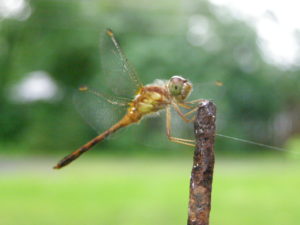Biodiversity and Climate Change
Climate change will have significant impacts on the natural world, food webs and nutrient cycles. As temperatures increase and precipitation patterns change, there will be many changes in the ecosystems which provide habitat for the flora and fauna of New Brunswick.
Many species currently listed as Species at Risk will face an increased risk of extinction, and other species not yet on the list may soon be added, due to changes in their habitat. For example:
- The Southern twayblade plant is found in and around bogs and among black spruce. Bogs are at risk of drying up or remaining dry for longer periods.

- Prototype quillwort is a plant that lives on the bottom of spring-filled lakes, in water that is cool and clear. The coming changes in climate may result in these lakes being shallower, warmer and dirtier.
- Piping plover feed and nest on the gravel-sand beaches of east and south New Brunswick. Increases in sea-levels and erosion due to storm surges will result in less beach habitat.
- Atlantic salmon require unpolluted cold streams and rivers for spawning. Dramatic changes in water levels because of alternating droughts and severe storms, plus overall temperature rise, serve to further endanger the salmon.
- The pollinators, such as butterflies and bees, that help produce many of our food supplies may find that changes to flowering seasons do not correspond to their life cycles, resulting in downward spirals for many pollinators.
What are the concerns with biodiversity and Climate change?
Most species will experience shifts in their natural home ranges to the north and to higher elevations. Plants and animals are generally capable of adapting to changes in their environment, but that ability is dependent on certain factors:
- Time: Many species can adapt quickly, either by migrating to more suitable habitat or altering their patterns. Other species, especially plants, require longer periods to adapt. Should the pace of change be too quick for species, they risk extinction.
- Genetic variability: The larger the population of individuals in a given species, the greater the likelihood that the species as a whole will survive, through simple evolution. Species currently endangered have lower genetic variability.
- New habitat availability: To adapt, many species have to change from their current habitats to new ones in order to survive. This requires that there be available places to which they can relocate. In an increasingly developed landscape, finding new habitat may be very difficult.
- Food sources: Change in temperature affects how early in the year animals produce young, hibernate and migrate, and when plants bloom and fruit. As species adapt at different rates the likelihood exists that some animals may not be able to find suitable food sources at the right time, and that more stress will be placed on the species.
